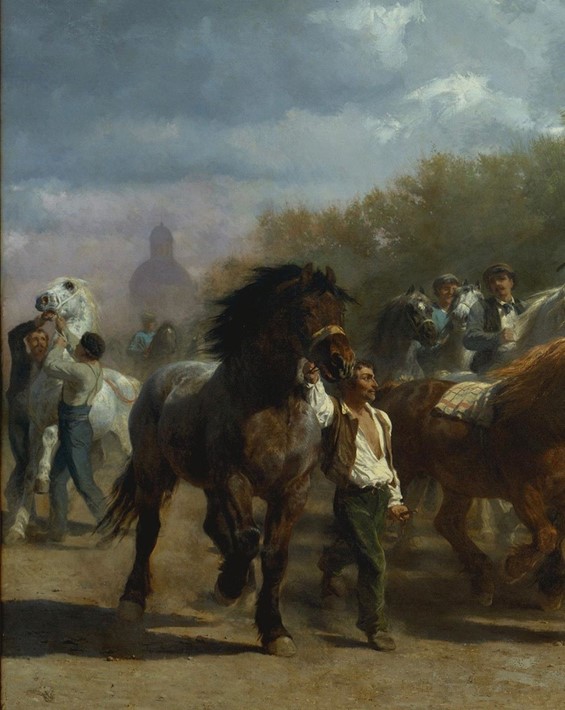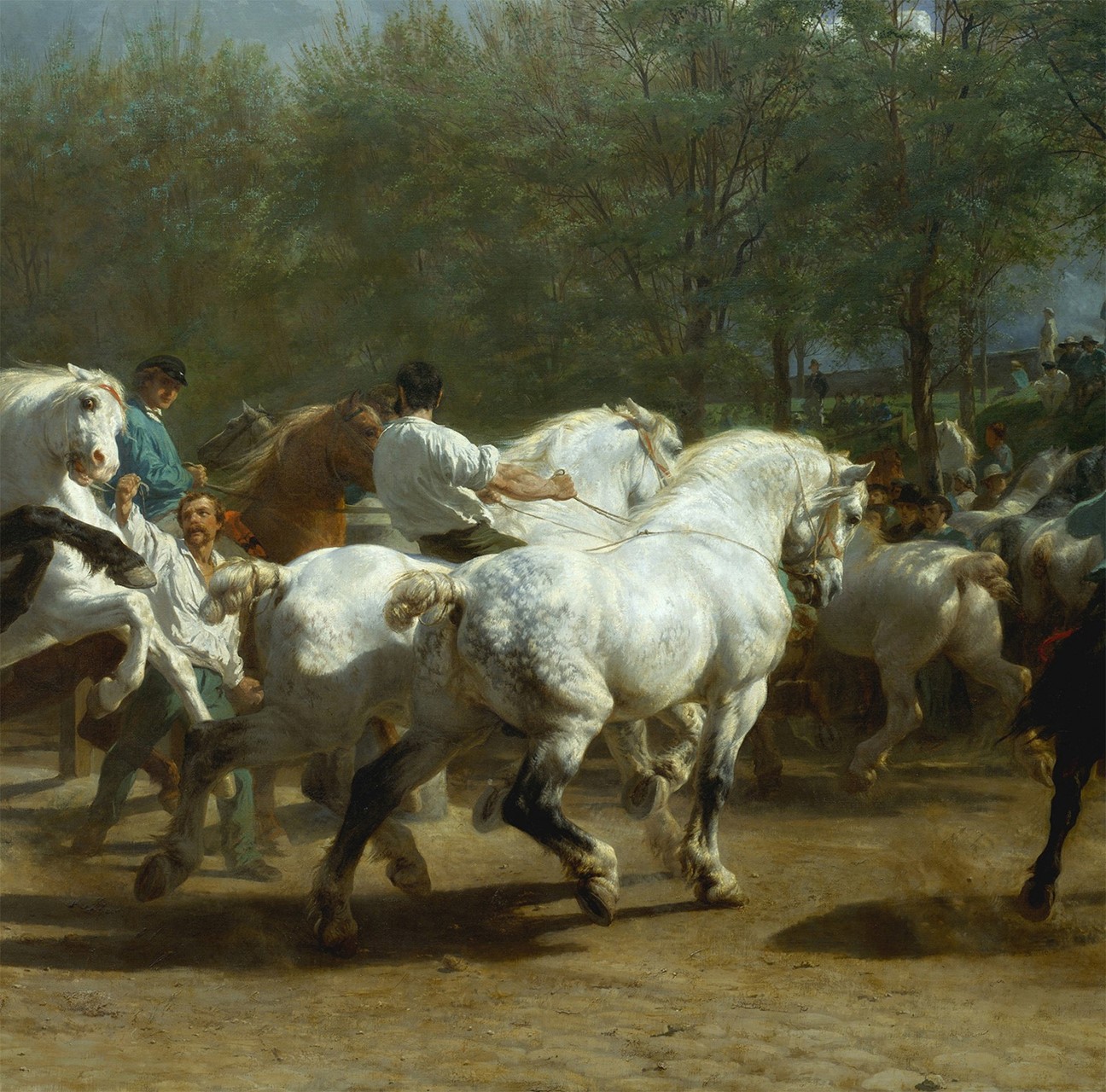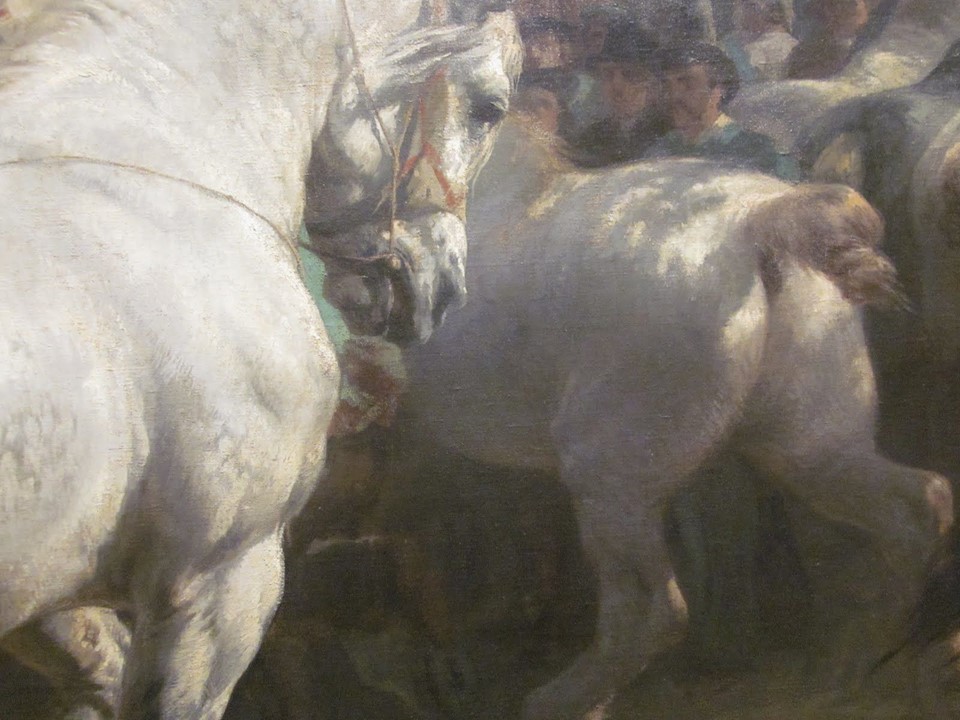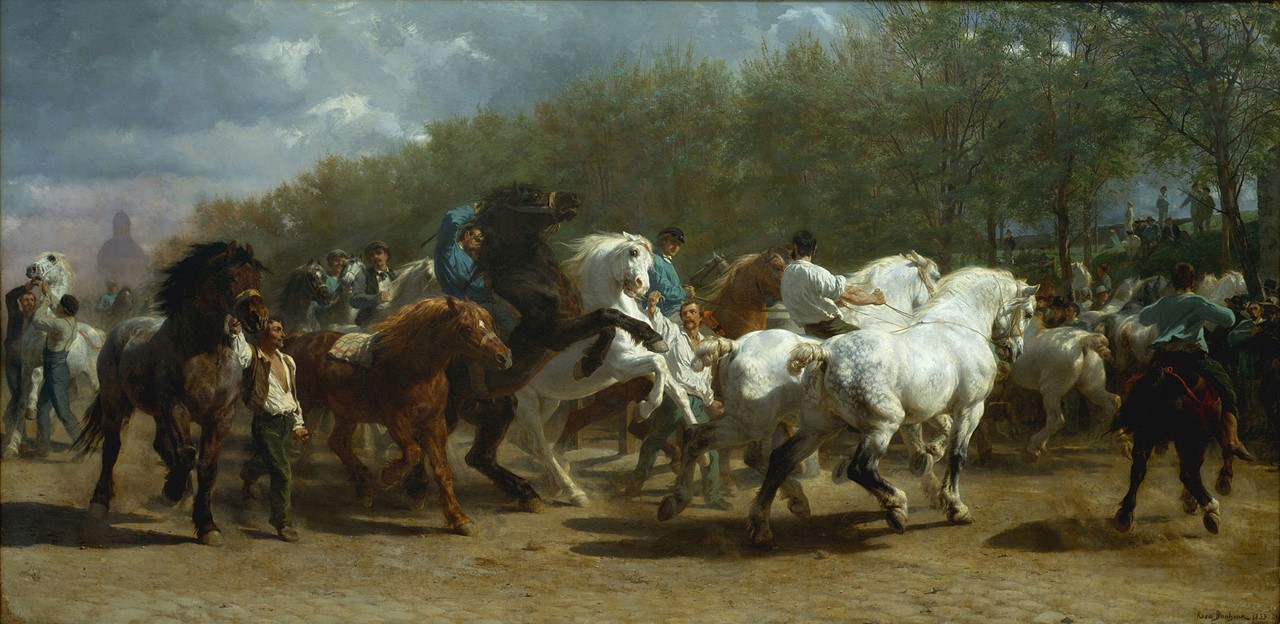
The Horse Fair, 1835–-55, oil on canvas, 244.5 cm × 506.7 cm, the MET, NY
“Ah! If nations could only agree to employ their resources to perfect agriculture and improve transportation, and to bring all their girl children a good education, what an explosion of happiness there would be on earth!” Rosa Bonheur said and I couldn’t agree more… She was a formidable lady and I like her! https://www.quotetab.com/quote/by-rosa-bonheur/ah-if-nations-could-only-agree-to-employ-their-resources-to-perfect-agriculture
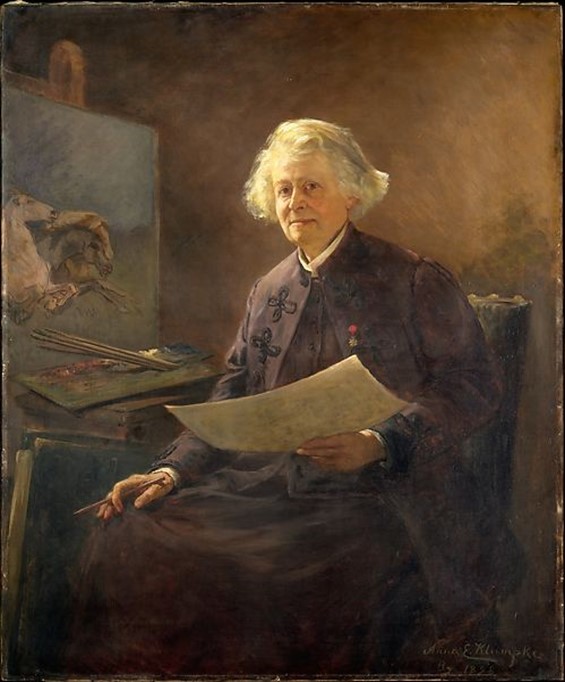
Rosa Bonheur, 1898, oil on canvas, 117.2 x 98.1 cm, the MET, NY
Rosa Bonheur was a lucky, talented lady! Her progressive painter father, Oscar-Raymond Bonheur, trained her to become a commercially successful painter and a spirited woman of staunch belief in women’s equality. “To my father’s doctrines, I owe my great and glorious ambition for the sex to which I proudly belong and whose independence I will defend until my dying day.” She was the oldest of four children, two girls and two boys, born to a pianist mother, who patiently and ingeniously taught her reluctant daughter how to read and write. Sophie Bonheur, Rosa’s mother noticed how reluctant her spirited daughter was to do her homework and how enthusiastic she was to draw. As the artist recalled ‘…One day she had a bright idea…She told me to draw an ass opposite the A and a cow opposite the C and so on…’ Rosa not only learnt how to read and write but, but inspired by her mother’s teaching method, she developed a lasting love and deep understanding of animals. https://www.theartstory.org/artist/bonheur-rosa/life-and-legacy/
Rosa’s formal education started at a boarding school run by Mme. Gilbert, but “…The Gilberts refused to harbour… such a noisy creature as I and sent me back home in disgrace…my tomboy manners had an unfortunate influence on my companions, who soon grew turbulent… ” Her father decided to take charge. She was 13 years old when Rosa started working at her father’s Studio first training to do pencil drawings of plaster casts and engravings, later still life paintings working from nature, landscapes, animals, and birds. Finally, she was sent to study painting and sculpture at the Louvre, the youngest of all students as she was only 14 years old.
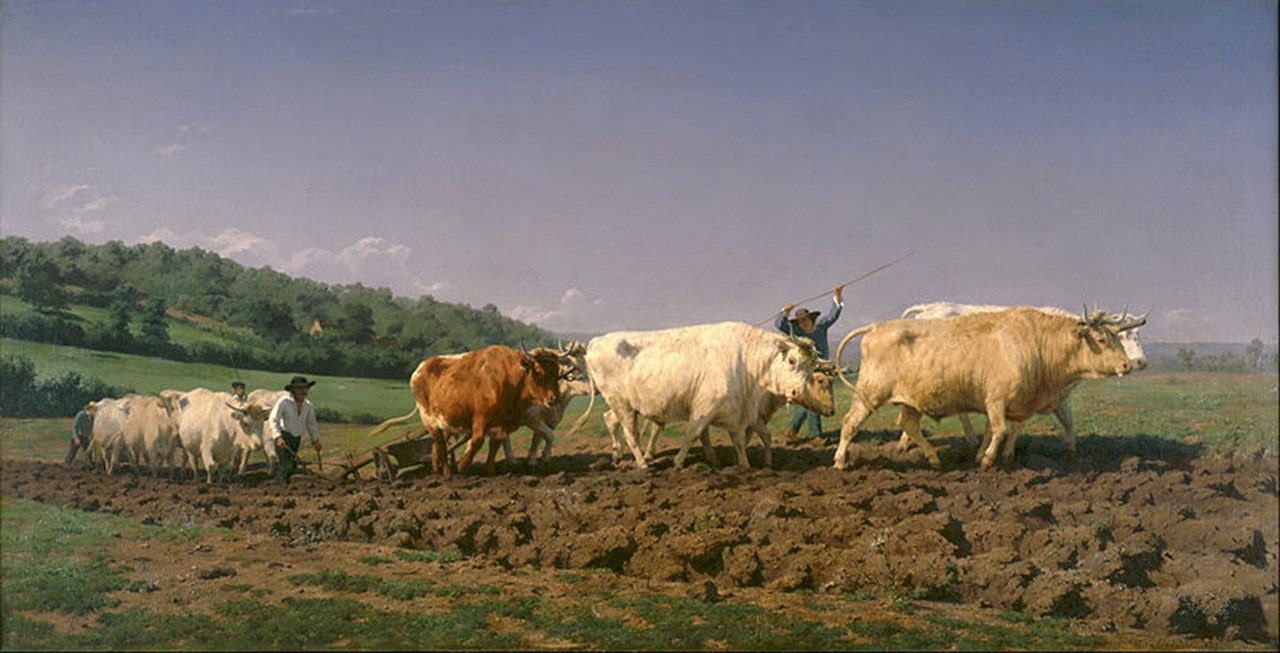
Ploughing in Nevers, 1849, oil on canvas, 1,340×2,600 mm, Musée d’Orsay, Paris
In 1841 Bonheur exhibited at the Paris Salon for the first time. By 1843 she was successful and selling her paintings regularly so much so that she was able to travel the country for inspiration and more paintings of French landscapes and animal studies. At the 1848 Salon Rosa Bonheur was awarded a gold medal, and the French government commissioned her to paint Ploughing in Nevers, exhibited at the 1849 Salon, to honour the age-old tradition of field ploughing by animal power. https://www.khanacademy.org/humanities/becoming-modern/avant-garde-france/realism/v/rosa-bonheur-plowing-in-the-nivernais-1849 and https://www.musee-orsay.fr/en/collections/works-in-focus/painting/commentaire_id/ploughing-in-nevers-2040.html?tx_commentaire_pi1%5BpidLi%5D=509&tx_commentaire_pi1%5Bfrom%5D=841&cHash=60f905d6af
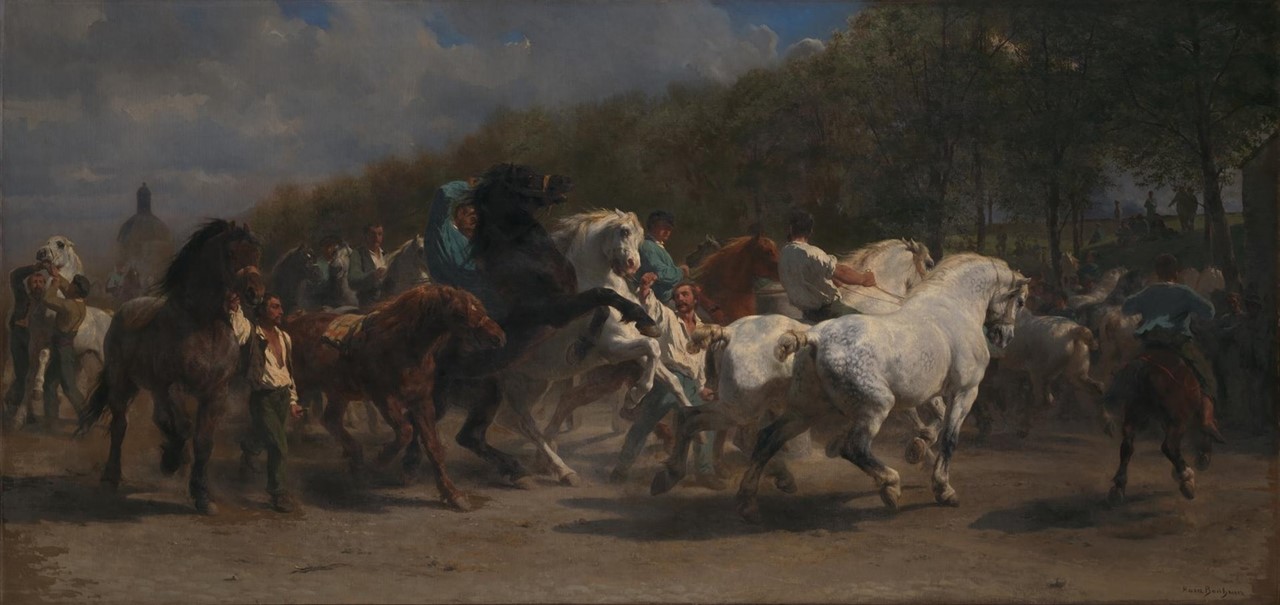
The Horse Fair, 1855, reduced version, 120 cm × 254.6 cm, National Gallery, London
Bonheur’s most famous painting was accomplished in 1855. Titled The Horse Fair, it is monumental in size and shows the famous horse market in Paris, on the tree-lined Boulevard de l’Hôpital, near the asylum of Salpêtrière, where Rosa Bonheur, dressed as a man by special police permission, sketched, preparing the painting, twice a week, from the summer of 1850 to the end of 1851. Rosalia Shriver writes that “When (the painting) was finally finished and exhibited at the Salon of 1853, its creator was only 31 years old. Yet no other woman had ever achieved a work of such force and brilliance, and no other animal painter had produced a work of such size.” Bonheur herself said that when she paints horses her “…dream is to show the fire which comes out of the horses’ nostrils; the dust which rises from their hooves. I want this to be an infernal waltz.” https://www.metmuseum.org/art/collection/search/435702 and Rosalia Shriver, Rosa Bonheur: With a Checklist of Works in American Collections, Art Alliance Press, Philadelphia 1982
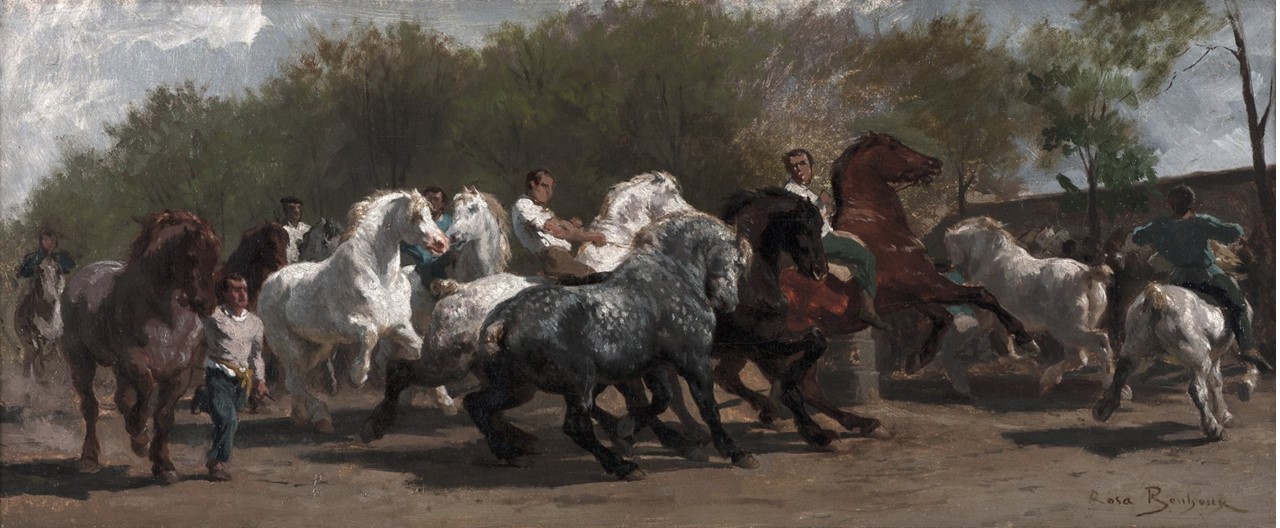
The Horse Fair, ca. 1852, oil on canvas, 26.67 x 63.5 cm, Albright-Knox Art Gallery
The original version of the The Horse Fair is part of the collection, and proudly exhibited, in the Metropolitan Museum of Art in New York along with two small studies of the painting on paper. The Albright-Knox Art Gallery has also a small oil on canvas study. Finally, a reduced version of the painting, dating in 1855, is exhibited in the London National Gallery of the United Kingdom, where Bonheur was highly successful , more so than in France. Interestingly, Bonheur’s fame and popularity in Britain led to a meeting with the Queen of England who, along with many of her countrymen appreciated Bonheur’s sentimental approach to landscape and rendering of animals. https://mymodernmet.com/rosa-bonheur-facts/
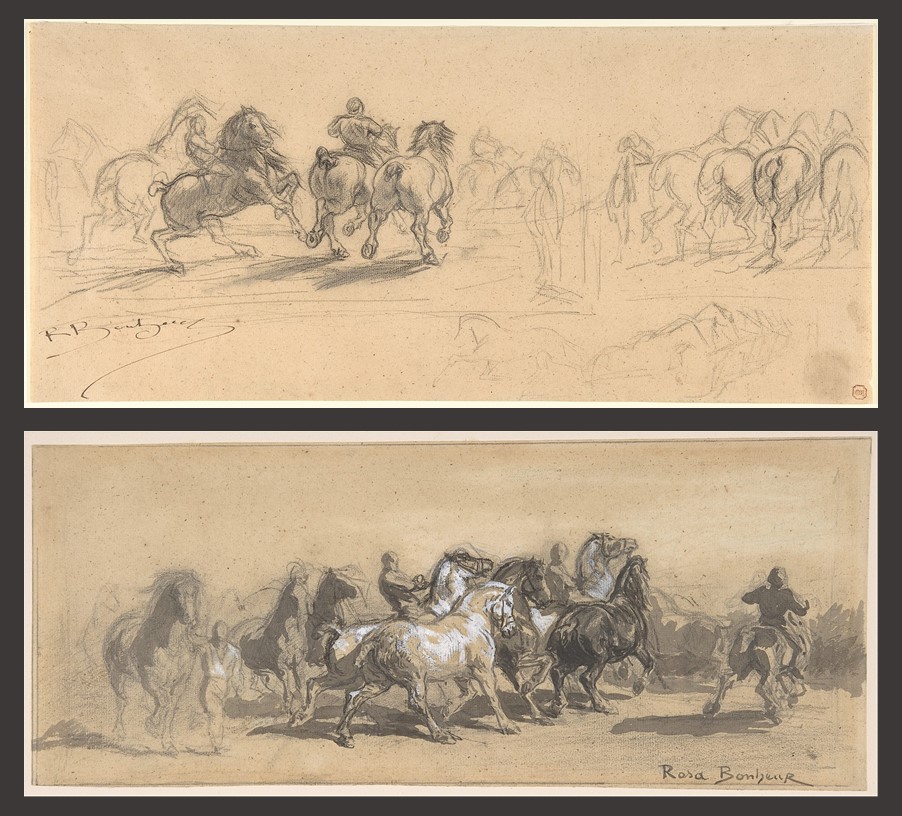
The Horse Fair, 1840–99, black chalk and graphite, 18.4 x 41.1 cm, the MET, NY
The Horse Fair, 19th century, black chalk, grey wash, heightened with white, 13.7 x 33.7 cm, the MET, NY
For a RWAP (RWAP stands for Research-Writing-Art-Project) student Activity, please… check HERE!
“Art is a tyrant. It demands heart, brain, soul, body. The entireness of the votary. Nothing less will win its highest favor. I wed art. It is my husband, my world, my life dream, the air I breathe. I know nothing else, feel nothing else, think nothing else.” https://www.quotetab.com/quotes/by-rosa-bonheur
